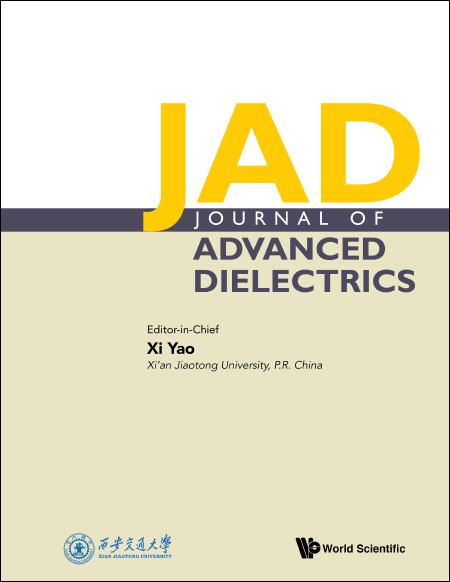 View fulltext
View fulltext
0.7Bi(1?x)NdxFeO3–0.3BaTiO3 (BNFO–BTO, x=0.005, 0.010, 0.020 and 0.050) ceramics were fabricated using the high-temperature solid-state reaction method. The X-ray diffraction (XRD) patterns revealed that the primary phase in these
In this paper, we present the study of the shape change on the polar surface and in the bulk of the walls of lamellar domains as a result of local switching by focused ion beam. Periodical lamellar domain structures (PDS) are crea
An analysis of heterophase states was carried out for ferro-active solid solutions of the system (1?x?y)NaNbO3?xKNbO3?yCdNb2O6. A complete stress relief at interfaces between phases in solid solutions with y=0.05 and x=0.10, 0.40,
This paper presents the results of an experimental study of the percolation behavior of the complex dielectric constant of ceramic matrix composites (CMC). Samples of piezoactive CMC were obtained by joint sintering of synthesized
Yttrium oxide–magnesium oxide (Y2O3–MgO) composite nanopowders were synthesized via three distinct methods: sol–gel, co-precipitation and glycine–nitrate process. The synthesized powders were calcined at various temperatures, and
In this paper, based on the developed statistical-thermodynamic model, which is based on data on the local structure of the compound and taking into account the striction interaction caused by the large sizes of the Ba and K catio
Electronic and dielectric properties are essential for understanding many functional materials, predicting their behavior and optimizing their performance across different shapes, geometries and scales. Several approaches were dev
In this paper, silver (Ag) nanoparticle-modified zinc oxide (ZnO) nanowall photoconductive ultraviolet photodetector was prepared by using magnetron sputtering technology, electron beam evaporation method and hydrothermal method.
Dielectrics with high permittivity and temperature stability are important for the development of high-temperature multilayer ceramic capacitors (MLCCs). In this study, Ca1?xNaxTi1?xNbxSiO5 (abbreviated as CTS?xNN) ceramics were p
In this work, a series of BiFeO3/ZnO composites with varying molar ratio of BiFeO3 to ZnO (Bi:Zn = 2.5:1, 5:1, 10:1, 20:1) have been synthesized via a one-step hydrothermal method and evaluated for their efficiency in rhodamine B









